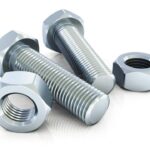Today we will learn about what is casting its working process, advantages, disadvantages and main casting terminology. Casting is defined as a manufacturing process in which molten metal pure into a mold or a cavity of desire shape and allow to solidify which form a predefine shape. This process is widely used to manufacture complex parts which cannot be made by other processes. All major parts like bed of lathe machine, milling machine bed, IC engine component etc. are made by this process.
What is Casting:
Working Process:
There are many types of casting which works differently but all these processes involves following steps.
- First metal is melted in a suitable furnace.
- Now molten metal poured into a predefine cavity.
- The molten metal allows to solidify at desire cooling rate.
- Removal of cast part from mould and clean it for further processes like machining, surface finishing polishing etc.
Advantages and Disadvantages:
Advantages:
Casting has following advantages over other manufacturing process.
- It can create any complex structure economically.
- The size of object doesn’t matter for casting.
- The casting objects have high compressive strength.
- All structure made by casting has wide range of properties.
- This can create an accurate object.
- All material can be cast.
- It creates isotropic structure.
- It is cheapest among all manufacturing processes.
- Composite component can be easily made by casting.
Disadvantages:
Along these advantages, casting has following disadvantages.
- It gives poor surface finish and mostly requires surface finish operation.
- Casting defects involves in this process.
- It gives low fatigue strength compare to forging.
- It is not economical for mass production.
Casting Terminology:
Flask:
The moulding flask is used to hold the sand mould. The sand mould has desire cavity of object which to be casted. The sand is rammed into the flask to create sand mould in which metal is poured to get desire shape. It is created into minimum two pieces which allows removal of pattern easily.
Cope:
The upper part of moulding flask is known as cope.
Drag:
The lower part of moulding flask is known as drag.
Cheeks:
When the moulding flask made into more than two parts, the intermediate parts are known as cheeks. These are used in complex casting.
Pattern:
Pattern is replica of object to be created. It is made by either wood, wax or other suitable material. It is placed into moulding flask and sand rammed over it which forms an object cavity into sand.
Pouring Basin:
It is a funnel shape cavity at the top of the mould. The metal is poured into pouring basin from where it is supplied at different parts of mould.
Runner:
Runner is a horizontal passage of molten metal. It connects sprue to getting system. Normally it is situated at lower half of mould.
Riser:
Riser is used as reservoir of molten metal when pouring of molten metal has stopped. When the cavity is filled by molten metal, the pouring is stopped which allows solidifying object. During solidification, volumetric shrinkage takes place which reduces the desire size and shape of object. The riser is provided into the mould which supplies the molten metal to remove effect of volumetric shrinkage during solidification. These are further divided into top riser, blind riser, side riser etc.
Sprue:
It is a passage which connects pouring basin to the runner. It controls the flow of molten metal from pouring basin. It is tapered in shape.
Ingate :
It is the entry point through which molten metal enters into the actual mould cavity.
Core:
Core is used to cast hollow cavity. It is also a sand structure and placed at right place into mould cavity where hollow part is to be created. The metal poured into mould cavity does not fill the part at which core is placed thus form a hollow cavity.
Chaplets:
These are supporting components of core. These used to support and hold the core into mould cavity. These protect the core from various forces encounter in casting.
Chills:
Chills are generally solid metal pieces which are placed into cavity to increase cooling rate. Mainly it is used to create direction solidification of molten metal. They have high thermal conductivity.
Vents:
These are small passages made in mould which allow to escape the gases during solidification.
This is all about what is casting, its working process, advantages, disadvantages and terminology used in casting. If you have any query regarding this article, ask by commenting. If you like this article, don’t forget to share it on social networks. Subscribe our website for more interesting articles. Thanks for reading it.








I like it send more
exlent….
and we are expecting much more from this site